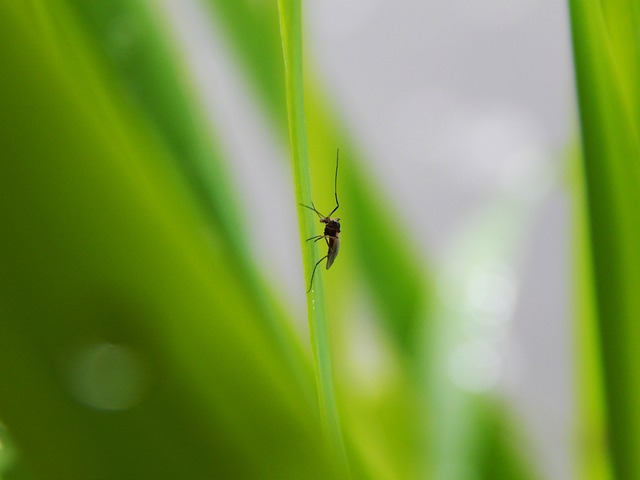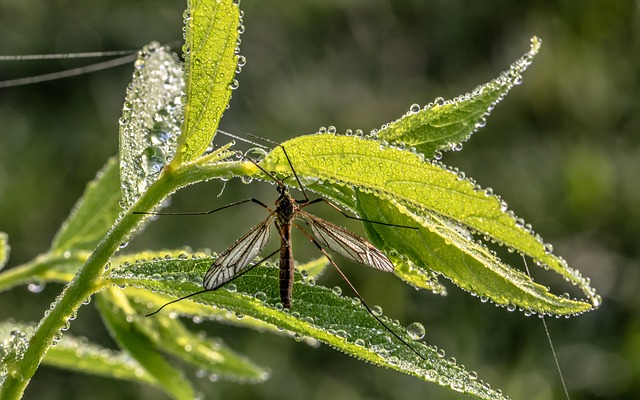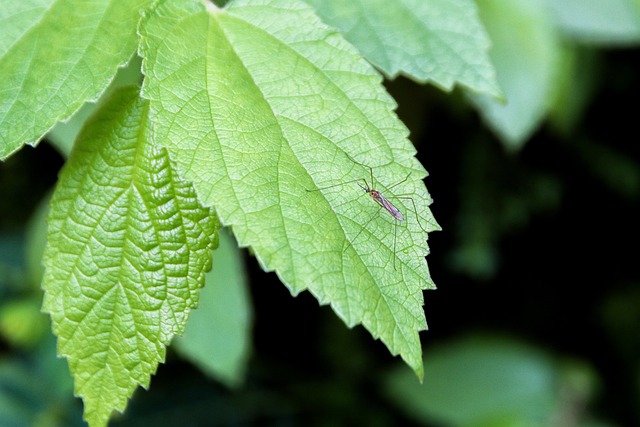Effective mosquito and tick control requires understanding their behaviors: mosquitoes breed near water and feed at dawn/dusk, while ticks inhabit outdoor environments. Strategies include eliminating standing water, maintaining landscaping, using repellents at the right times, and employing natural methods like essential oils, DIY traps, aromatic plants, and professional services. Seasonal preparation, prevention, and multi-faceted approaches are crucial. Community collaboration enhances these efforts for better individual and public health protection.
“Keep your outdoor spaces enjoyable and safe with affordable, effective mosquito and tick control methods. Understanding these pests’ behavior is key to success, allowing you to implement natural solutions like aromatic plants and DIY traps. For a professional touch, explore expert services and seasonal strategies. Learn how community efforts can enhance protection against these irritating insects. Discover the perfect balance of green approaches and strategic planning for ultimate mosquito and tick control.”
Understanding Mosquito and Tick Behavior: Key to Effective Control

Understanding the behavior of mosquitoes and ticks is crucial for effective control measures. These pests are highly adaptable and possess unique habits that influence their presence in various environments. Mosquitoes, for instance, are drawn to water sources for breeding, often laying their eggs in stagnant pools or wetlands. They are most active during dawn and dusk, making these times critical for prevention strategies. Ticks, on the other hand, are primarily outdoor creatures, thriving in tall grass and shrubs where they wait for passing hosts. They can remain dormant for extended periods and become active when conditions are right, typically in warmer months. Knowing these behaviors allows property owners to implement targeted control methods, such as eliminating standing water, maintaining landscaping, and using repellents at the right times.
By adopting a strategic approach that considers these behavioral patterns, individuals can significantly reduce mosquito and tick populations on their properties. Simple measures like regular pool maintenance, removing potential breeding sites, and using natural repellents can go a long way in creating an unappealing environment for these pests. Such proactive steps not only protect against bites but also contribute to overall public health by minimizing the risk of disease transmission associated with mosquitoes and ticks.
Natural Repellents: A Green Approach to Keeping Pests at Bay

Natural repellents offer an eco-friendly solution for mosquito and tick control, appealing to those seeking sustainable pest management options. Essential oils like citronella, lavender, and peppermint are known for their ability to deter these insects due to their unique chemical compounds. These natural substances can be used in various forms, such as essential oil diffusers, candles, or even direct application on the skin as a topical repellent.
Incorporating these scents into your outdoor environment is an effective way to create a barrier against mosquito and tick bites without resorting to synthetic chemicals. Many people find that mixing these oils with water and spraying the solution around their homes or in garden areas provides long-lasting protection, making it a cost-effective and environmentally conscious approach to pest control.
DIY Mosquito and Tick Traps: Simple Solutions for Homeowners

DIY Mosquito and Tick Traps: Simple Solutions for Homeowners
For homeowners looking to take matters into their own hands, DIY mosquito and tick traps offer an affordable and eco-friendly alternative to chemical-based solutions. These simple yet effective devices can be created using common household items, making them accessible and cost-efficient. By harnessing the power of natural elements like CO2, heat, and light, these traps attract and capture mosquitoes and ticks without resorting to harmful pesticides.
Creating DIY mosquito and tick traps is a straightforward process that doesn’t require specialized equipment or expertise. Materials such as buckets, soapy water, and black plastic sheets can be used to construct basic but highly effective traps. By strategically placing these traps around the yard or home, homeowners can significantly reduce pest populations, providing a safer and more enjoyable outdoor space for families and pets. This approach not only saves money but also promotes a healthier environment by minimizing exposure to synthetic chemicals.
Planting for Pest Control: Aromatic Plants as Natural Barriers

Planting aromatic plants is an eco-friendly and cost-effective strategy for natural mosquito and tick control. Certain herbs and flowers possess properties that repel these pests due to their strong scents, offering a safe alternative to chemical treatments. For instance, lavender, citronella grass, and marigolds are renowned for their ability to ward off mosquitoes.
Incorporating these fragrant plants into your garden or outdoor space can create a natural barrier against insect bites. They not only add aesthetic value but also provide a healthy, chemical-free solution for pest management. Additionally, many of these plants have therapeutic benefits and can contribute to a pleasant ambiance, making them a versatile choice for both mosquito and tick control.
Professional Services: When and How to Hire Experts

Many homeowners opt for professional mosquito and tick control services, especially in areas with high infestation risks. Hiring experts is crucial when dealing with persistent or widespread pest issues. These professionals bring specialized knowledge and equipment to effectively manage and eradicate mosquitoes and ticks. They can assess unique yard environments, identify breeding grounds, and employ targeted treatments tailored to specific needs.
The decision to hire experts should be considered year-round, as these pests are active during different seasons. Seasonal treatments are common, but proactive measures ensure a more comprehensive approach to mosquito and tick control. Regular inspections and maintenance visits from professionals can significantly reduce pest populations, providing homeowners with peace of mind and outdoor spaces that are safer and more enjoyable.
Seasonal Strategies: Preparing for Peak Mosquito and Tick Activity

As the seasons change, so does the activity of mosquitoes and ticks. To effectively manage these pests, it’s crucial to prepare in advance for peak season. During the warmer months, when mosquitoes and ticks are most active, implement regular maintenance around your property. This includes eliminating standing water, trimming vegetation, and sealing entry points. By taking proactive measures, you can significantly reduce the risk of bites and minimize the need for frequent mosquito and tick control treatments.
Additionally, consider using natural repellents and fostering beneficial insects like birds, bats, and dragonflies in your yard. Birds feed on mosquitoes, while bats and dragonflies prey on ticks. Encouraging these predators can help keep mosquito and tick populations under control without resorting to chemical treatments. In terms of mosquito and tick control, a multi-faceted approach that combines prevention, natural methods, and seasonal strategies is the most effective way to protect yourself and your family.
Community Efforts: Collaborating for Broader Protection

In many communities, collaborative efforts are emerging as a powerful strategy for effective mosquito and tick control. By banding together, neighbors, local governments, and community organizations can implement broader protection measures. This might include sharing resources, organizing collective clean-up drives to eliminate breeding grounds like stagnant water, or establishing cooperative surveillance systems to track and report mosquito and tick activity.
Such collaborative initiatives leverage the collective knowledge and actions of a community to create a more robust defense against these pests. By fostering a sense of shared responsibility, these efforts not only enhance individual protection but also contribute to the overall public health and well-being of the community.
